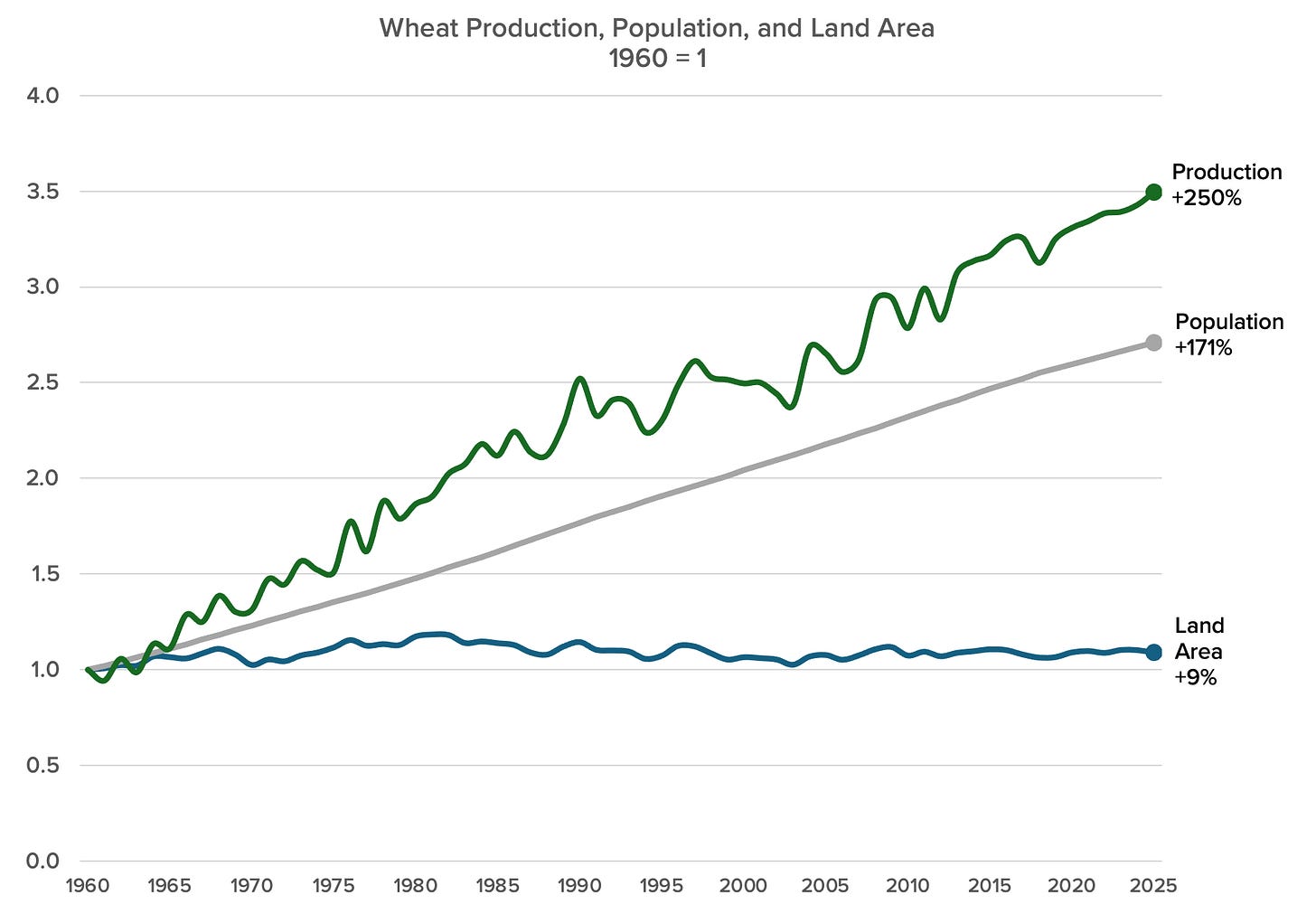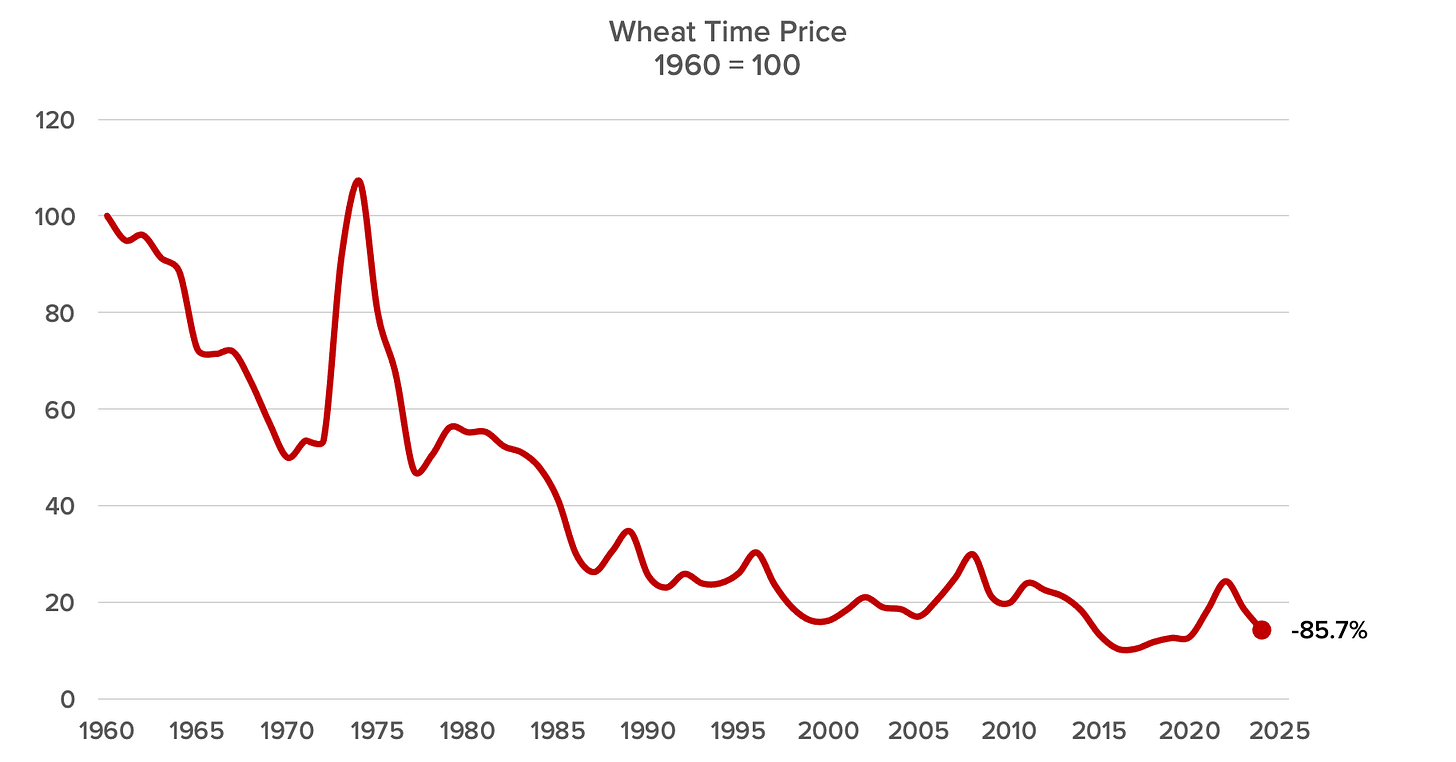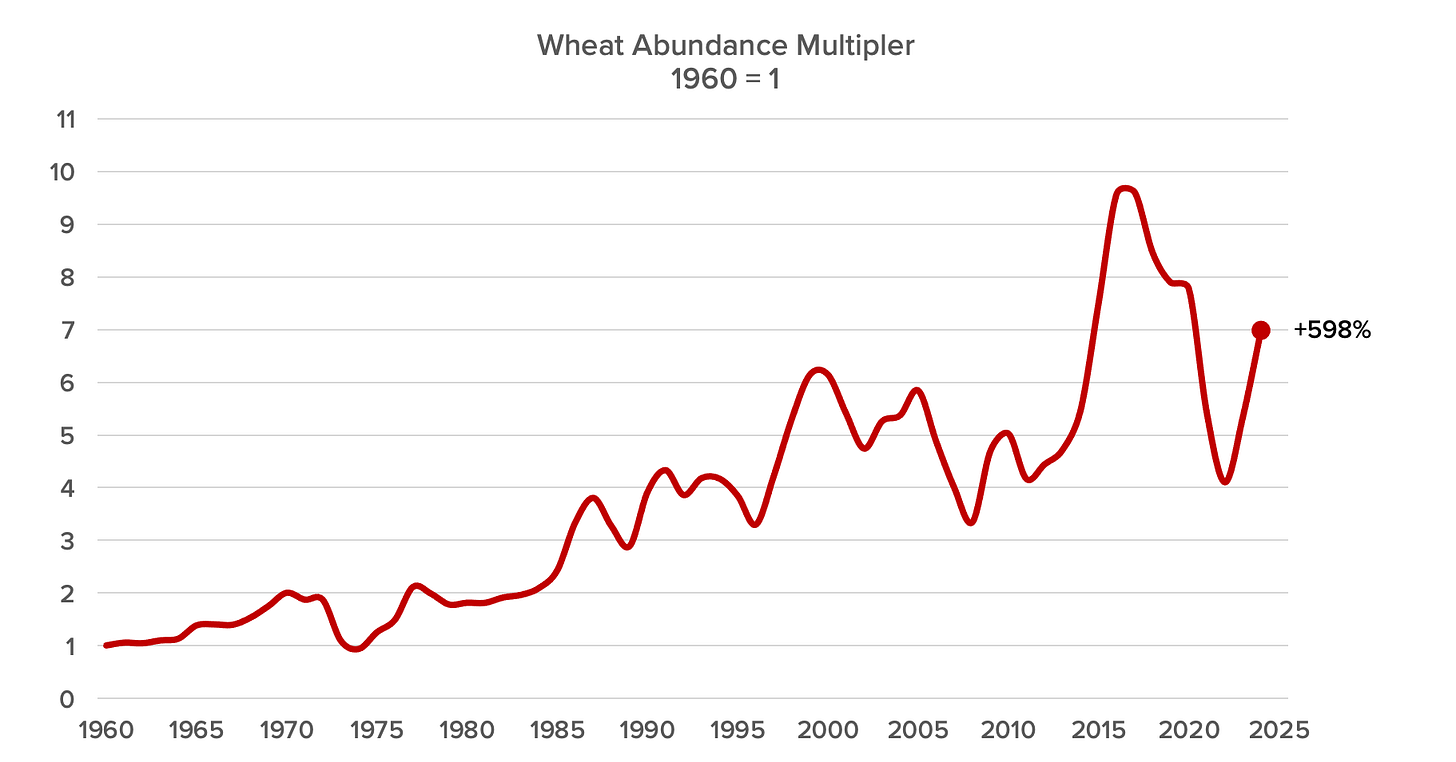Wheat Superabundance Proves Malthus Wrong
Compared to 1960, we can grow 250 percent more wheat on 9 percent more land, at an 85.7 percent lower time price.
The Reverend Thomas Malthus (1766–1834) got it backwards. In his 1798 Essay on Population he warned that “the power of population is indefinitely greater than the power in the earth to produce subsistence for man. Population, when unchecked, increases in a geometrical ratio. Subsistence increases only in an arithmetical ratio.”
Malthus even added, with no small dose of condescension, that “a slight acquaintance with numbers will shew the immensity of the first power in comparison of the second.”
When Malthus published his essay, the world’s population hovered around 1 billion. By 1960 it had reached 3 billion. Today it stands at roughly 8.2 billion. And yet, instead of mass starvation, food production has outpaced population growth. Consider wheat.
According to the US Department of Agriculture, since 1960 wheat production has surged by 250 percent, while the world’s population grew by only 171 percent. For every 1 percent increase in population, wheat production rose by 1.46 percent. Even more remarkable, this bounty came from just 9 percent more arable land. Wheat yields—the amount harvested per acre—have soared by 271 percent.
But what about the time price? Glad you asked. Since 1960, the time price of wheat has fallen by 85.7 percent.
Put differently, the time it took to earn the money to buy a single bushel of wheat now buys almost seven bushels.
Yes, there have been moments when wheat prices spiked—due to droughts, wars, and politics. Yet with fewer conflicts, relentless innovation, and open markets, wheat has only grown more abundant. If Reverend Malthus could see our world today, I suspect he’d be relieved—and perhaps even delighted—that human ingenuity proved him to be so spectacularly wrong.






Great piece. This idea is similar to something that I think many environmentalists have a hard time wrapping their mind around-- if you point out humanity's advances in material prosperity, you're often met with the response "sure, but that has come at an unacceptable cost to the environment" (which, we readers of Doomslayer know to be untrue!)
I often wonder where this feeling comes from--the skepticism of things getting better without some kind of "catch"-- we have a deep cultural attitude of "If a thing sounds too good to be true, it usually is." But the story of economic growth and Superabundance IS that good! Growth is the closest thing to a free lunch we have.
Is it a protestant ethic, where we are taught to believe that thrift and sacrifice are moral goods? Or maybe because the world truly was more Malthusian for most of our history, so it's wired into us?
Either way, glad Doomslayer is here to keep us rationally optimistic!
Malthus was right for all of human history right up till the time he was writing. Give the guy a break.